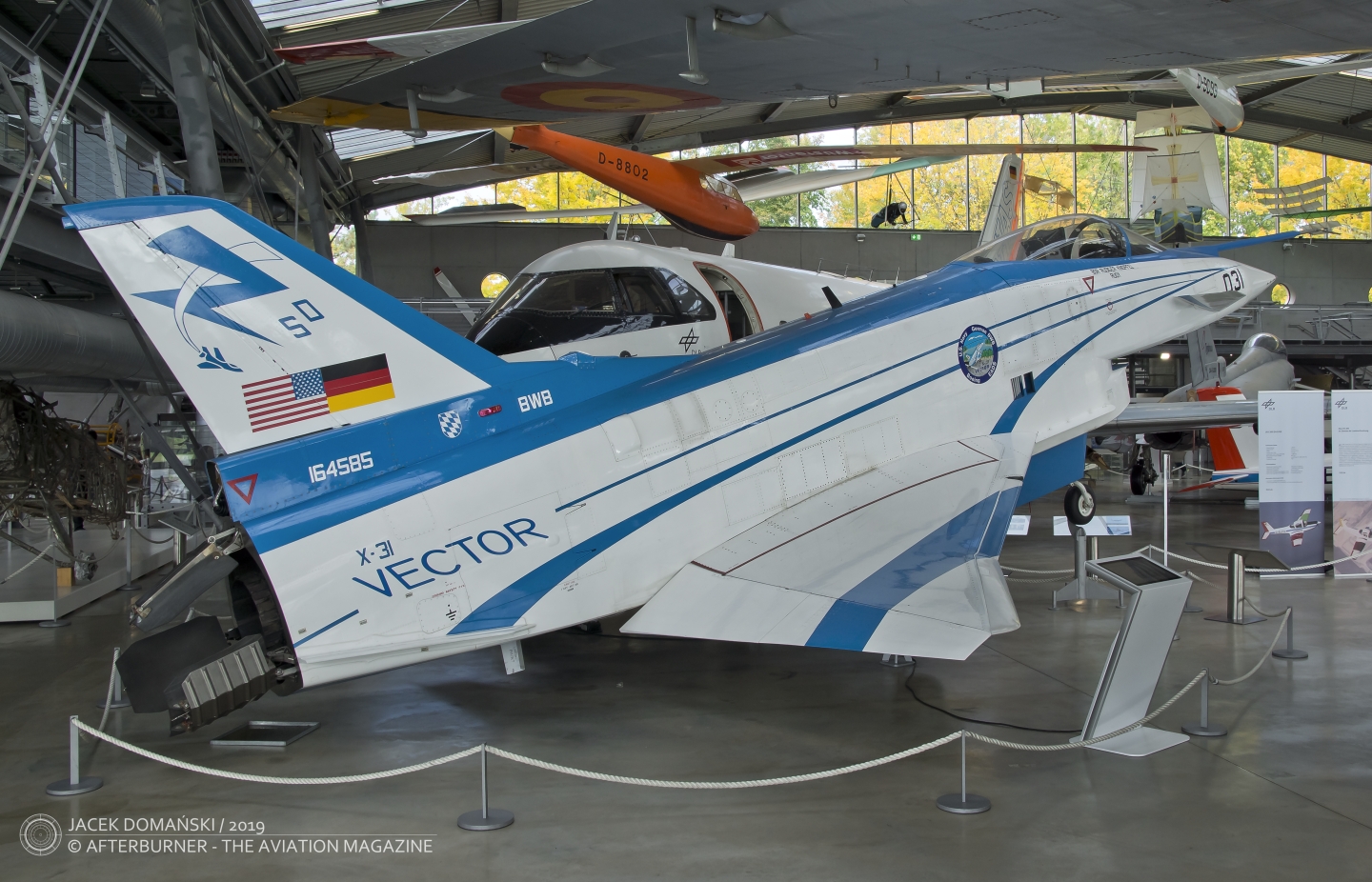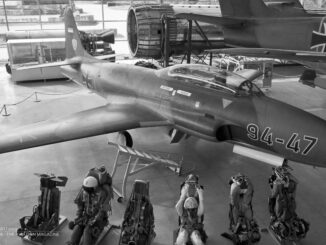
The Rockwell-Messerschmitt-Bölkow-Blohm X-31 (also known as X-31 VECTOR), experimental jet fighter exhibited in the Flugwerft Schleissheim aviation museum in Oberschleißheim (a branch of Deutsches Museum, Munich).
An X-series of research aircraft already made its mark in the aviation history, the projects evaluated by the USAF, NACA and then NASA either broke several records or achieved the aviation milestones: breaking the sound barrier in the level flight (X-1), first aircraft to exceed the Mach 3 (X-2), the fastest piloted flight at Mach 6.70 (X-15) and many others. It cannot be overlooked that the ideas tested with the X-series experimental aircraft had a significant impact on the design of the operational aeroplanes and rockets.
Among all those test aeroplanes, the X-31 is the very unique one, being the very first X-series aircraft made as a result of the international cooperation.
The roots of this programme go to the Vietnam War and the years 1960 – 1970 – as reported by the USAF, in that timeframe more than 100 of F-4 fighters were lost in the Vietnam War and additional 147 aircraft of all types were lost during other operations, just because one reason: loss of control in high angle-of-attack situations. It became clear that the future jet fighter had to be made with the better manoeuvrability and the next natural step in this evaluation process was the question of super-manoeuvrability.
The performance of the jet aircraft at the point close to the stall boundary was the subject of several research programmes, conducted by British Aerospace, Rockwell International or MBB. A similar research was also performed on the other side of the Iron Curtain, finally introducing the Su-27 fighter family.
Both Rockwell International and MBB were at that time also supporting the Swedish development of JAS-39 Gripen, and during this cooperation it was, taking the opportunity, decided that both companies would combine their efforts in the joint research programme – this was exactly the point when X-31 was born.
Even if the testbed airframe was an all-new design, several parts and solutions from already existing operational aircraft or prototypes were implemented into the X-31 construction, taken from F-16, F-18, Experimental Aircraft Programme (that in the end developed into the EF-2000), TKF-90 (German future jet fighter) and many others.
However, it was the thrust vectoring system of the X-31 that made this aeroplane unique. The system consisted of three paddles at the rear of the fuselage that could direct the thrust and provide precise aerodynamics control at high angles-of-attack, where conventional aircraft would lose it.
Two prototypes were built, and the maiden flight was performed on 11th October 1990. More than 500 test flights were then performed between 1990 and 1995, when on 19th January 1995 one of the prototypes crashed. The reason was the ice inside the pitot tube, causing the aeroplane computers were receiving wrong speed data. The pilot ejected safely.
The second prototype was used to perform demonstration flights at 1995 Paris Air Show and then, in June 1995 the programme was concluded.
During those test flights, the X-31 achieved controlled flight at a 70° angle of attack and also performed the turn, later named J-turn or ´Herbst manoeuvre´ (Dr. Wolfgang Herbst, the MBB scientist, was one of the X-31 programme initiators).
The X-31 research was resumed in 1999, starting the Vectoring ESTOL (extremely short take-off and landing) Control and Tailless Operational Research (VECTOR) programme. Several test flights with the second remaining prototype were then performed until 2003. The X-31 achieved the landing speeds of only 124 knots (142 mph, 229 kph) at 24 degrees angle-of-attack and landed in about 1,700 feet (518 meters).
On 29th April 2003 the X-31 performed its final flight. Currently, the prototype is exhibited at the Flugwerft Schleissheim aviation museum in Oberschleißheim, near Munich. Both first and the second research programme received many international awards, for the contribution in the aircraft development.
Sources: Boeing, NASA, ´Flying Beyond the Stall´ – book by Douglas A. Joyce



